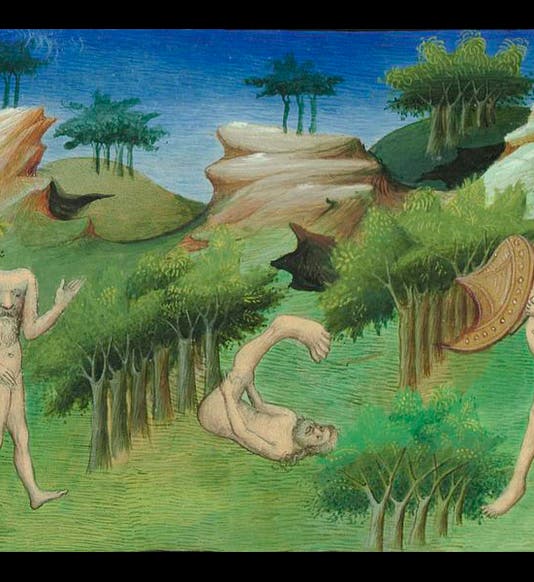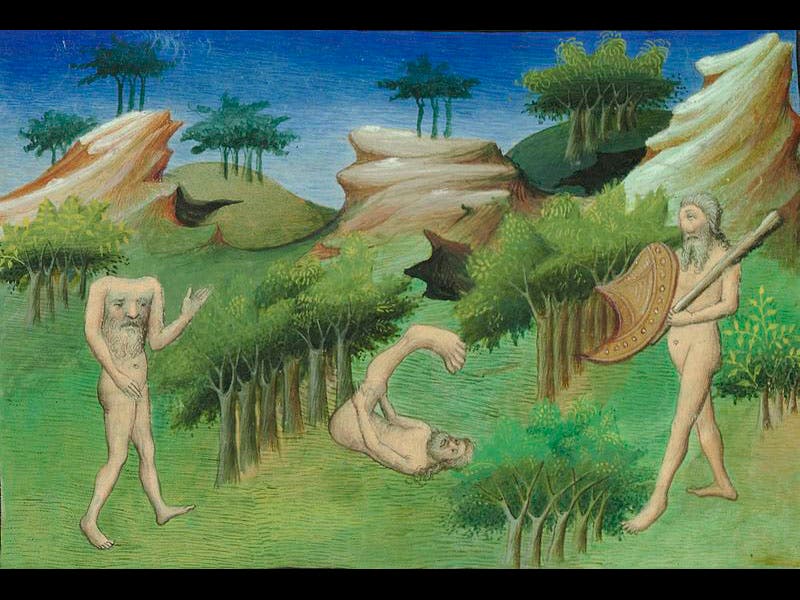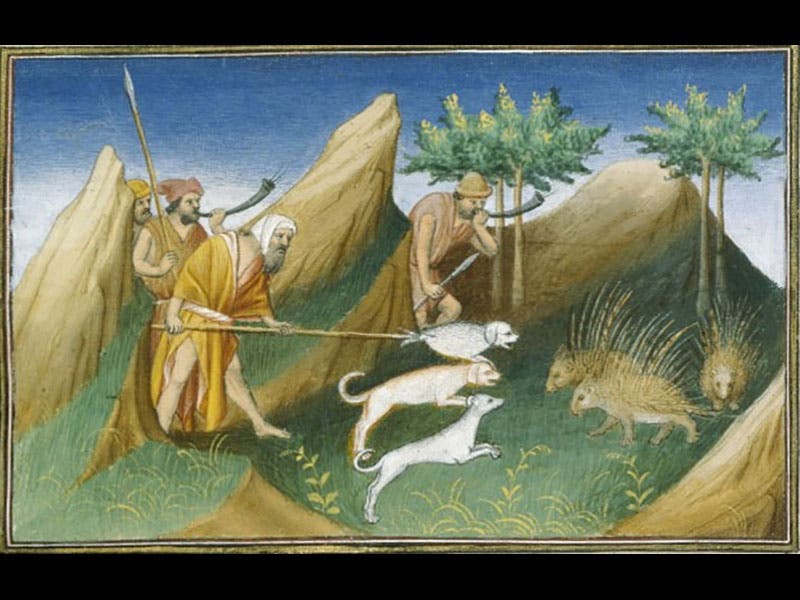Scientist of the Day - John Mandeville
Sir John Mandeville, a medieval travel-book author, died on Nov. 17, 1372---perhaps. Historians have had a great deal of difficulty identifying the author of The Travels of Sir John Mandeville (ca. 1360), but he was most likely either a Flemish physician named Jean de Bourgogne or a monk named Jan de Langhe; the death date belongs to the latter, and we adopt him as author here, since otherwise, we have no date to use as a pretext for an anniversary. Mandeville's Travels describes a journey through Africa, Egypt, the Middle East, India, Indonesia, and "Cathay"--the realm of the Great Khan. Whoever the author was, he is unlikely to have ventured far from his abbey or dispensary, since almost the entire text of his book can be traced to the narratives of Marco Polo, Odoric of Pordenone, Vincent of Beauvais, Jean de Plano Carpini, and a half-dozen others. Its derivative origin notwithstanding, Mandeville’s Travels far outshone all the others in popularity. It was through Mandeville that Christopher Columbus, Leonardo da Vinci, and William Shakespeare all learned about the marvels of the East. Mandeville's descriptions of monstrous humans that inhabited distant lands were exotic and exciting, especially when illustrated, as the Travels often were.
Mandeville tells us of the Sciopods, who inhabit Ethiopia, and who hop around on one huge foot, until the sun rises high, whereupon they flop on their backs in the shade of their monopod parasol (first image). We learn of the island-dwelling dog people, who have the heads of hounds, worship an ox as their god, and wear a golden ox idol upon their foreheads (second image). We get a view of a fabulous mountainside, sporting an elephant, a unicorn, and several other mythical animals (third image). And we can read about Cypriots, who use panthers instead of dogs for hunting (fourth image).
Since we don’t really know who John Mandeville was, we would not expect to find any portraits of our author, but we have two of them. The first is from a 1459 manuscript at the New York Public Library (fifth image). The second is the frontispiece to the Mandeville section of an earlier manuscript, dating to about 1412, showing Mandeville receiving final instructions from his Norman king (sixth image). This second manuscript, in the Bibliotheque Nationale in Paris, is called Le Livre des merveilles. It is often referred to as Fr. 2810 and is quite well known among medievalists, because of its 265 illuminations. Fr. 2810 contains selections from the narratives of Marco Polo, Odoric, Mandeville, and a few others, and the hand-painted illustrations are undeniably appealing. The images of the sciopod, dog-people, unicorn, and panther-hunters above come from this manuscript. It would seem that the artists had no idea what a panther looks like, but were reasonably familiar with porcupines.
Dr. William B. Ashworth, Jr., Consultant for the History of Science, Linda Hall Library and Associate Professor, Department of History, University of Missouri-Kansas City. Comments or corrections are welcome; please direct to ashworthw@umkc.edu.












